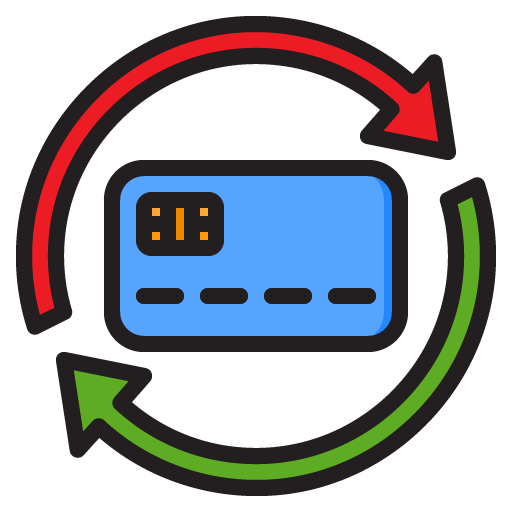In the ever-changing landscape of nonprofit advocacy, where causes vie relentlessly for notice and financial backing, patron retention proves pivotal to sustained achievements. Benefactors represent more than a lifeline for nonprofits; they embody the heartkeeping these organizations beating and prospering. Therefore, it is paramount not only to recruit new advocates but also to nurture and maintain existing loyal ones.
Donors can stray for many motivations, regularly leaving nonprofits struggling with the intricacies of reinvigorating their interest and dedication. These obstacles, ranging from benefactor weariness to shifts in personal fiscal conditions, are exacerbated by a defining factor: the transient nature of benefactor modes of payment.
Understanding Donor Retention
Donor retention, at its very core, refers to simultaneously an art and a science – keeping supporters invested in and committed to a nonprofit over the long haul. It’s about far more than just securing that first gift; instead, it involves cultivating a sense of connection, trust and shared purpose that endures beyond a single transaction. Nurturing lasting relationships demands genuinely engaging donors and transforming them into advocates who are passionate about the cause.
Why does donor retention matter?
Donor retention matters profoundly for several compelling reasons. To begin with, a constant stream of fresh donors alone cannot sustain nonprofit operations. Relying on repeat givers builds a dependable source of funding to weather financial uncertainty and plan ahead. Furthermore, bringing in new donors can be quite costly due to marketing, outreach and administration. On the other hand, holding onto existing donors tends to require fewer resources, maximizing fundraising efforts. Additionally, loyal backers are inclined to give more over time as they witness impact and feel increasingly invested in the mission. Experiencing an organization firsthand often inspires existing donors to increase contributions and champion growth. Lastly, pleased patrons frequently promote your work enthusiastically to others, naturally expanding your supporter base through their endorsement.
Statistics on donor retention rates:
To emphasize the significance of donor retention, consider these striking statistics: According to a 2021 report by the Fundraising Effectiveness Project, a meager 43.6% of donors who supported organizations the prior year continued their support, meaning over half did not. The same report found that on average, it takes five times the expense to obtain a new donor than retain an existing one, underlining the strategic importance of focusing on retention. Furthermore, research by Bloomerang discovered merely increasing retention 10% can lead to a 200% boost in lifetime donor value. Plainly stated, donor retention is far from optional; it’s fundamental to financial stability, growth and mission success for nonprofits. The real question isn’t whether to prioritize retention but rather how to implement it effectively.
Common Challenges in Donor Retention
Donor retention, while crucial, isn’t always simple sailing. Nonprofits regularly confront a host of obstacles eroding benefactors’ commitment. Let’s examine common stumbling blocks more closely:
Disconnect dulls giving. When contributions feel meaningless, or impact unseen, patrons participate less readily.
Excessive requests risk weariness. Burdening backers brutally forestalls further funding.
Financial flux foils philanthropy. Economic uncertainty ushers patrons to pare payments, despite passion for causes.
Life modifications modify munificence. Marriage, retirement, or newborns alter ability and eagerness to donate.
Opaqueness breeds mistrust. Failing to furnish transparent reports on resource allocation sows seeds of attrition.
Choices challenge commitment. In this landscape, benefactors can bestow blessings elsewhere, aligning aims more accurately.
Technological troubles try patrons. Outmoded donation processes frustrate funders, dissuading future financing.
Information irregularities imperil income. Naturally, personal details diverge. Credit card changes, in particular, imperil recurring rewards, risking lost benefactors if unaddressed promptly. Facilitating ongoing assistance, the very mechanism meant risks becoming a barrier.

Introducing Automatic Credit Card Updates
Automatic credit card updates have emerged as a revolutionary solution for nonprofit organizations determined to strengthen donor engagement. Let us explore the moving parts of this groundbreaking technology and how it is upending conventional methods of managing benefactor payments.
A High-Level View of Automatic Credit Card Updates:
Automatic credit card updates, sometimes called “donor account updater,” are ingenious mechanisms intended to streamline the handling of recurring donations made via credit or debit cards. These services actively monitor changes in benefactors’ payment information, such as altered card numbers, modified expiration dates, or adjustments to billing addresses. When any variations occur, the system swiftly syncs the donor’s details, guaranteeing that future transactions proceed seamlessly.
How Automatic Credit Card Updates Function:
The procedure is reasonably straightforward yet tremendously impactful:
Information Observation: The system incessantly monitors the payment particulars of benefactors who have established reoccurring donations. It searches for any modifications or refreshes furnished by the issuing banks.
Information Retrieval: When changes are spotted, the system retrieves the updated card specifics from the bank or monetary establishment. This may include a fresh card number, expiration date, or billing address.
Information Integration: The refreshed data is effortlessly amalgamated into the nonprofit’s donor management or cost handling system. This confirms that future donations are processed using the most current card information.
Benefits for Nonprofits:
Automatic credit card updates offer a host of advantages for nonprofit organizations, boosting benefactor commitment and functional efficiency:
Benefactor Loyalty: By preventing donation disruptions due to expired or altered credit card information, nonprofits can substantially diminish benefactor attrition rates. Benefactors stay invested and dedicated to backing your cause without the nuisance of updating their payment details manually.
Steady Income Streams: With fewer interruptions, nonprofits can rely more on steady, predictable income streams. This fiscal stability enables organizations to plan their programs and initiatives with certainty.
Enhanced Benefactor Experience: Benefactors appreciate a seamless and hassle-free giving experience. Automatic updates eliminate the need for benefactors to take action to maintain their contributions, contributing to a positive benefactor experience.
Security Measures for Benefactor Information:
Security is paramount when it comes to managing benefactor information, and automatic credit card updates are no exception. Robust security measures are put in place to safeguard sensitive benefactor data:
Encryption: Benefactor information is encrypted at all stages of the update process, ensuring that it remains confidential and protected from potential breaches.
Compliance: Card updater services adhere to industry standards and regulations, such as the Payment Card Industry Data Security Standard (PCI DSS), to maintain the highest levels of data security.
Data Access Controls: Access to benefactor data is restricted to authorized personnel only, further reducing the risk of data breaches.
Benefits of Automatic Credit Card Updates
Seamless donor experiences and stable revenue: The full advantages of automated credit updates for nonprofits. Technological transformations can greatly benefit donor retention and satisfaction in impactful ways.
Benefits of automatic credit card updates:
Convenience defines giving. Donors value ease and a smooth experience. With autoupdates, updating cards is effortless for donors. Hassle-free engagement encourages commitment to causes.
Interruptions rarely disrupt donations. Notably, autoupdates dramatically curb interruptions from expired cards. The system immediately remedies card changes, ensuring transactions proceed harmoniously.
Satisfied donors remain loyal. Uninterrupted support yields gratified interactions. Pleased experiences potentially cultivate long-term devotion and elevated donations through time.
Reliable incomes enable effective planning. Nonprofits rely on steady, predictable streams when disruptions diminish. This stability facilitates purposeful program execution and mission focus.
Resources focus inward, not outward. Autoupdates lessen administrative burdens. Instead of manually updating details or contacting donors, efforts center mission activities and substantive involvement.
Updating before issues emerge:
Proactive vigilance defines the system. Rather than awaiting realization of expired cards, it preemptively tracks and remedies alterations. Continuous observance promptly resolves any variances.
Churn declines significantly. Especially repetitive interruptions frustrate donors into discontinuing support. Autoupdates help shrink this, retaining intact donor bases.
Implementing Automatic Credit Card Updates
Now that we have explored the impact that automatically updating donors’ expired credit cards can have through real-world examples, let us shift our focus to the practical aspects of implementing this cutting-edge technology within your nonprofit. Here is a step-by-step guide to help charities seamlessly integrate automatic credit card updates:
To begin, carefully assess your organization’s unique donor retention challenges and goals. What exact issues are causing high rates of attrition? Which benchmarks must you hit to be successful?
Conduct exhaustive research to find reputable service providers or software solutions that offer this service. Look for those with a proven track record of success within the third sector. While comparing options, ensure compatibility with your existing systems is uncompromised.
Migrating over donor information and training staff on the ins and outs of the platform are important preparations. This includes familiarizing employees with accessing refreshed financial details and navigating any new software seamlessly.
Developing a strategic outreach plan to update supporters is key. Clearly explain the perks, assuage security concerns, and allow opting out for transparency. Continual performance monitoring will offer insight into refinement.
When selecting a partner, reputation and data protection carry weight. Consider scalability and costs realistically too. Comparing customer care and technical support levels aids the choice.

Ensuring Data Privacy and Security
Data privacy and security are crucial considerations in today’s digital landscape. When generous contributors share their personal and financial details with nonprofit causes, they reasonably expect responsible stewardship of sensitive information. Failure to safeguard donor data can lead to grave outcomes including damaged trust in an organization, legal penalties, and harm to an institution’s reputation.
Measures to Fortify Donor Confidentiality:
Leading automatic credit card update services make data protection a top priority through comprehensive precautions. Sophisticated encryption renders information unreadable during exchange and storage, confirming secrecy for authorized eyes only. Strict access controls confine information to approved personnel, lessening the chance of improper exposure. Adherence to rigorous industry standards like PCI DSS outlines rigorous requirements for credit card information security. Frequent independent reviews probe for vulnerabilities, and data duplication shelters against unforeseen data loss.
Reassuring Contributors of Security Safeguards:
It is imperative that nonprofits effectively communicate their commitment to safeguarding sensitive files. A clear, detailed privacy policy on an organization’s website explains how contributor particulars are gathered, applied, and shielded. Transparency regarding security measures in place demonstrates the seriousness of protection. Partnership with verified services displaying a history of robust precautions allows confirmation of practices from an outside source. Regular updates keep contributors informed of developing security efforts like new certifications or audits of an institution or service provider. Advance response planning is necessary in case of a security incident to include prompt handling.
Conclusion
While the automatic credit card updater offered by Werbylo provides nonprofits a stable source of funding, we understand the financial struggles many face. Our software streams donations without ceasing, sustaining important work through ups and downs.
Nonprofits wield transformative might with Werbylo. Challenges morph to chances, unstable periods stabilize. Donors remain the lifeline for missions aiding others. In them beats passionate purpose, kept steady by our service shielding from disruption. Sign up and channel efforts where most needed, not diverted to recurrent resourcing requests. Stability strengthens service – use ours freely.





